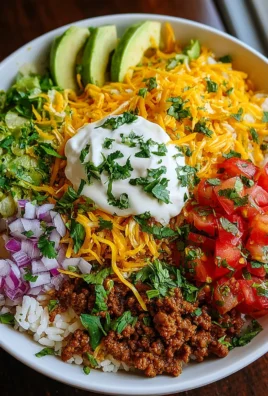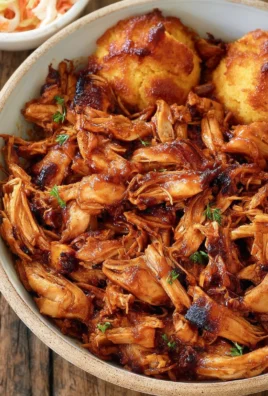
Vegan lentil curry is a dish that embodies the perfect combination of wholesome ingredients, vibrant flavors, and comforting textures. Its roots are steeped in culinary traditions from around the world, yet it remains a versatile and accessible recipe that can be adapted to suit personal preferences and dietary needs. The dish’s foundation is built on lentils, a nutrient-dense legume, combined with aromatic spices and rich, creamy bases, making it both nourishing and satisfying.
What makes vegan lentil curry particularly remarkable is its ability to transcend cultural boundaries. From the bold, spiced curries of India to the hearty lentil stews of the Middle East, this dish has found its way into countless cuisines and kitchens. Its appeal lies in its simplicity, adaptability, and the opportunity it offers to showcase the depth and diversity of plant-based cooking.
Historical Context
The Origins of Lentils in Cuisine
Lentils are one of the oldest cultivated crops, with evidence of their use dating back over 9,000 years in the Fertile Crescent. Their hardiness, nutritional value, and versatility made them a staple food for ancient civilizations, including the Egyptians, Greeks, and Romans. Lentils were often referred to as “the poor man’s meat” due to their affordability and high protein content, yet they were also prized for their rich, earthy flavor.
The Evolution of Curry
The term “curry” originates from the Tamil word kari, meaning “sauce,” and refers to a broad category of spiced dishes. Curries have a long history in South Asia, where they were traditionally prepared with a variety of spices and local ingredients, including lentils. Over time, the concept of curry expanded and evolved, influenced by trade, colonization, and cultural exchange. Today, curry is a global phenomenon, with each region adding its own unique touch to the dish.
Lentils in Global Curry Traditions
Lentils have been a key component of curry dishes in several cuisines:
- India: Lentils, or dal, are a cornerstone of Indian cooking, featured in dishes like Tadka Dal, Sambar, and Masoor Dal Curry.
- Middle East: Lentil-based stews like Mujaddara combine lentils with rice and caramelized onions, offering a hearty, spiced meal.
- Africa: Ethiopian Misir Wot is a spiced red lentil stew that highlights the region’s bold flavors and unique spice blends.
The fusion of lentils and curry spices has become a popular choice for vegans and vegetarians, offering a protein-rich alternative to meat-based curries.
Nutritional Benefits of Lentil Curry
Vegan lentil curry is not just delicious; it’s also a powerhouse of nutrients. The combination of lentils, vegetables, and spices creates a dish that is both nourishing and balanced.
High in Protein
Lentils are an excellent source of plant-based protein, making them a staple for vegans and vegetarians. One cup of cooked lentils provides approximately 18 grams of protein, contributing to muscle repair and overall health.
Rich in Fiber
Lentils are packed with dietary fiber, which promotes healthy digestion, stabilizes blood sugar levels, and supports cardiovascular health. A single serving of lentil curry can provide up to 50% of the recommended daily intake of fiber.
Loaded with Micronutrients
- Iron: Essential for energy production and oxygen transport in the blood.
- Magnesium: Supports bone health, nerve function, and muscle relaxation.
- Potassium: Helps maintain fluid balance and supports heart health.
- B-Vitamins: Including folate, which is crucial for cell growth and development.
Anti-Inflammatory Properties
The spices used in vegan lentil curry, such as turmeric, ginger, and garlic, are known for their anti-inflammatory and antioxidant benefits. These ingredients help combat oxidative stress, support immune function, and may reduce the risk of chronic diseases.
Low in Fat and Cholesterol
Without the use of animal products, vegan lentil curry is naturally low in saturated fat and cholesterol, making it a heart-healthy option. Coconut milk or plant-based cream can add richness without compromising on health.
Why Vegan Lentil Curry is Universally Loved
Flavorful and Aromatic
The combination of spices and aromatics creates a symphony of flavors that tantalize the taste buds. Each bite is a balance of warmth, heat, and richness, with layers of complexity that make the dish deeply satisfying.
Adaptable and Inclusive
Vegan lentil curry can be customized to suit dietary restrictions, ingredient availability, and personal preferences. It can be made gluten-free, oil-free, or adjusted for different spice levels. The inclusion of various vegetables and legumes makes it endlessly versatile.
Affordable and Accessible
Lentils and spices are economical staples that are widely available, making this dish accessible to people across different regions and income levels. The affordability of lentils also allows for large batch cooking, making vegan lentil curry a great option for meal prep or feeding a crowd.
Perfect for Any Occasion
Whether served as a comforting weeknight dinner, a hearty meal for gatherings, or a dish to impress guests with bold flavors, vegan lentil curry fits seamlessly into any setting. It can be dressed up with garnishes and accompaniments or kept simple for a rustic, homestyle feel.
Key Components of Vegan Lentil Curry
- Lentils
- Types of lentils used:
- Red lentils: Cook quickly and break down to create a creamy texture.
- Green or brown lentils: Hold their shape, providing a firmer bite.
- Black lentils: Add an earthy depth and richness.
- Types of lentils used:
- Aromatic Base
- The trio of onions, garlic, and ginger forms the foundation of most curries. These ingredients are sautéed until golden, releasing their natural sweetness and building a robust flavor base.
- Spices and Seasonings
- A blend of whole and ground spices adds depth and complexity. Common spices include:
- Turmeric: For color and anti-inflammatory benefits.
- Cumin: Adds an earthy, nutty flavor.
- Coriander: Provides a citrusy undertone.
- Garam Masala: A warm, fragrant blend of spices that defines many Indian curries.
- Chili powder or fresh chilies: For heat and boldness.
- A blend of whole and ground spices adds depth and complexity. Common spices include:
- Creaminess and Liquid Base
- Coconut milk or plant-based cream creates a luscious, velvety texture, while vegetable broth adds depth. Adjusting the ratio of these ingredients determines the consistency of the curry.
- Vegetables and Add-Ins
- Common choices include tomatoes, spinach, carrots, and bell peppers. Seasonal or locally available vegetables can also be incorporated.
- Finishing Touches
- Fresh cilantro, a squeeze of lime juice, and toasted nuts or seeds provide brightness, acidity, and texture to the final dish.
Ingredients and Step-by-Step Techniques
Crafting a rich and flavorful vegan lentil curry requires a harmonious combination of carefully selected ingredients and precise cooking techniques. Every component, from the lentils to the spices, plays a vital role in creating a dish that is as nutritious as it is delicious. In this section, we’ll delve into the details of each ingredient and guide you through the step-by-step process to ensure your curry achieves the perfect balance of flavor, texture, and aroma.
Essential Ingredients and Their Roles
1.1. Lentils: The Heart of the Dish
- Types of Lentils
- Red Lentils (Masoor Dal): Cook quickly and break down into a creamy consistency, ideal for thick curries.
- Brown or Green Lentils: Hold their shape during cooking, providing a hearty texture.
- Black Lentils (Beluga or Urad Dal): Add a nutty flavor and firm bite, creating depth in the dish.
- Preparation Tips
- Sorting and Rinsing: Always check lentils for debris or small stones before cooking. Rinse thoroughly under cold water until the water runs clear.
- Soaking: While not always necessary, soaking lentils can reduce cooking time and improve digestibility.
1.2. Aromatics: Building the Flavor Base
- Onions, Garlic, and Ginger
- These ingredients form the aromatic foundation of the curry. When sautéed, they release their natural sweetness and create a robust flavor profile.
- Preparation Tips:
- Dice onions finely to ensure they melt into the curry.
- Mince garlic and ginger or use a paste for even distribution.
1.3. Spices: The Soul of Curry
- Common Spices Used
- Turmeric: Adds a warm, earthy flavor and vibrant golden color.
- Cumin: Offers nutty, slightly bitter undertones that enhance the depth of the dish.
- Coriander: Provides a citrusy brightness.
- Garam Masala: A blend of warm spices like cinnamon, cloves, and cardamom for a fragrant finish.
- Red Chili Powder or Fresh Chilies: Adjust to taste for heat.
- Toasting Spices
- Toasting whole spices such as cumin seeds or mustard seeds in hot oil at the start of cooking releases their essential oils, intensifying their flavors.
1.4. Vegetables: Enhancing Texture and Flavor
- Common Choices
- Tomatoes: Provide acidity and richness. Use fresh or canned, depending on availability.
- Spinach or Kale: Stirred in towards the end for added nutrients and vibrant color.
- Root Vegetables (Carrots, Potatoes, Sweet Potatoes): Add heartiness and natural sweetness.
- Bell Peppers: Contribute a subtle sweetness and crunch.
1.5. Liquid and Creamy Elements
- Coconut Milk: The most common choice for a creamy, rich base. Full-fat coconut milk provides a luxurious texture, while light coconut milk offers a lower-calorie alternative.
- Vegetable Broth: Enhances the depth of flavor. Use homemade or low-sodium store-bought options.
- Water: Used to adjust consistency without overwhelming the flavors.
1.6. Finishing Touches
- Fresh Herbs: Cilantro or parsley for a pop of freshness and color.
- Acidic Components: A squeeze of lime or lemon juice brightens the dish and balances richness.
- Optional Garnishes: Toasted nuts, seeds, or crispy shallots add texture and visual appeal.
Step-by-Step Techniques
2.1. Preparing the Ingredients
- Mise en Place: Organize all your ingredients before cooking. Chop vegetables, mince garlic and ginger, and measure out spices.
- Rinse Lentils: Rinse lentils under cold water until the water runs clear. Soak them if desired to reduce cooking time.
2.2. Sautéing the Aromatics
- Heat Oil: Heat a neutral oil (such as coconut or vegetable oil) in a heavy-bottomed pot over medium heat.
- Add Onions: Cook the onions until golden and caramelized, about 5–7 minutes. This step builds the flavor foundation of the curry.
- Add Garlic and Ginger: Stir in the garlic and ginger, cooking for 1–2 minutes until fragrant.
2.3. Toasting the Spices
- Whole Spices First: Add whole spices like cumin seeds or mustard seeds. Let them sizzle and pop in the hot oil for 30–60 seconds.
- Ground Spices Next: Sprinkle in ground turmeric, cumin, coriander, and chili powder. Stir to coat the aromatics and toast for 1–2 minutes, releasing their aromas.
2.4. Building the Curry Base
- Add Tomatoes: Stir in diced fresh tomatoes or canned crushed tomatoes. Cook until they break down into a thick, jammy consistency.
- Incorporate Lentils: Add the rinsed lentils to the pot, stirring to coat them in the spiced tomato mixture.
2.5. Adding Liquids
- Pour in Liquid: Add coconut milk, vegetable broth, or water to the pot, ensuring the lentils are fully submerged. Stir to combine.
- Simmer: Bring the mixture to a boil, then reduce the heat to low. Cover and simmer gently, stirring occasionally to prevent sticking.
2.6. Cooking the Vegetables
- Timing Matters: Add root vegetables like potatoes and carrots early in the cooking process, as they take longer to soften. Add tender greens like spinach or kale during the last 5 minutes to preserve their color and texture.
- Adjust Liquid Levels: Check the consistency of the curry periodically, adding more broth or water if needed.
2.7. Finishing the Dish
- Taste and Adjust: Once the lentils and vegetables are tender, taste the curry. Adjust seasoning with salt, pepper, and additional spices if needed.
- Add Fresh Elements: Stir in chopped cilantro, a squeeze of lime juice, or a dash of garam masala for a final burst of flavor.
2.8. Serving
- Accompaniments: Serve the curry over steamed basmati rice, quinoa, or with flatbreads like naan or roti.
- Garnishes: Top with toasted nuts, seeds, or a dollop of plant-based yogurt for added richness.
Tips for Perfect Vegan Lentil Curry
- Layer Your Spices: Toasting whole spices first and adding ground spices later helps build a complex flavor profile.
- Monitor Lentil Texture: Check lentils frequently to avoid overcooking. They should be tender but not mushy unless a creamy texture is desired.
- Customize Heat Levels: Adjust the amount of chili powder or fresh chilies to suit your spice tolerance.
- Balance Flavors: Use acidic components like lime juice to cut through the richness of coconut milk, and add a touch of sweetness if the curry tastes too tangy or bitter.




Leave a Comment